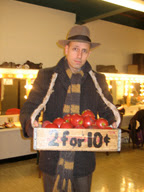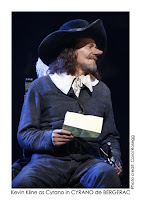
I’ve watched the first three seasons of “That Girl” on DVD and am looking forward to the release of the final two. I LOVED that show as a child. I was about 10 or 11 when it came on and watching it was like being struck by lightening. I thought, “That’s what I want!” I don’t know if I had ever even heard of New York much less visited, but it looked so glamorous and romantic and exciting I intuitively know I needed to be there. When I shared this at a dinner party recently one of the male guests said he had had the same reaction growing up in Kentucky.
During the second season my mother brought me up for a visit and I felt at home for the first time in my life. I remember thinking, “Oh, this is where I’m supposed to be.” I had always felt like a fish out of water in Baltimore, but didn’t know there was any other way to feel. (You know the saying, a fish doesn’t know it’s in water. Well, it was a similar idea.) From that first visit I knew I had to live in New York, and from then on I felt I was just biding my time in Baltimore.
I didn’t know then that “That Girl” was a groundbreaking show, that never before had a single woman been shown living on her own and pursuing a career. Women had always been someone’s wife, or mother, or daughter, never their own person. Years before “That Girl” came on, when my friends talked about how much they loved “Lucy,” I didn’t, budding little feminist that I was. I used to say, “It’s a battle of the sexes and Lucy always loses.” I didn’t know the word sexism then, but I recognized it.
Marlo Thomas was my ideal. When I found out she was appearing at a theatre in downtown Baltimore, my friend Terry Hagan and I took the bus down to look for her. We must have been about 12 or 13. I didn’t know how theatre worked then; I thought because her play was running that she would always be at the theatre, so Terry and I went there to meet her. We tried the doors but they were locked because, of course, it wasn’t anywhere near show time. That didn’t stop me. I led Terry up to the roof, found an open door and in we went. We crept down from the heights of the empty building, found the theatre space and went in. And there she was!!! The hero of my life was sitting on the stage talking to a man. As I think about it now, it might have been a consult with the director because there wouldn’t have been a reason for her to be there otherwise. But it seemed perfectly natural to me at the time.
Terry and I crawled down the aisle so no one would see us and went into a row and peeked our heads over the seats to gaze at “Ann Marie.” My heart was bursting with excitement. I wanted to talk to her, but was afraid at the same time. She meant so much to me, it was scary to come face to face with her. Finally we got up the courage and headed up the steps that led backstage. A stagehand saw us and asked what we were doing. I told him we wanted to say hi to Miss Thomas. He said she was busy and that we had to leave. I didn’t argue because, as I said, I was a little afraid to meet her. I’ve often wondered how she would have received us.
Watching “That Girl” every Thursday was an archetypal awakening, and it never left me. Usually as we get older we turn away from what we wanted as children because we realize it was just a childish desire. I never wavered from wanting what I saw on “That Girl.” Even as an adult, I didn’t want to get married and have children; I wanted to have my own apartment in New York and a career.
Well, here I am four decades later. I made it! New York has been all I ever could have asked for and more. A friend and former boss said in his Christmas card last year, “You’ve made good use of New York.” Yes, I have.
I’ve heard so often the idea that people come to New York and remake themselves, but I’ve never agreed. People come to New York so they can become themselves, their true selves, away from narrow and conformist worlds that stifle the individual.
I’m too old now to be That Girl, but I’m This Woman, living happily ever after in New York City. Thank you, Marlo Thomas!












